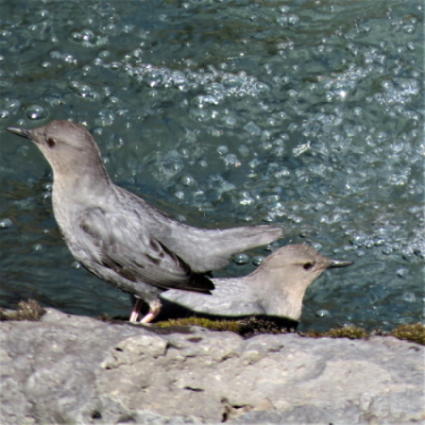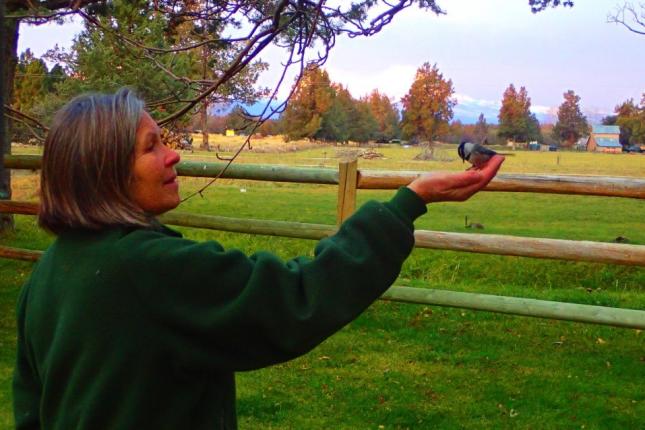Carol's Corner
The Snorkeling Songbird
 A songbird that plunges into rushing rivers, swims for its supper, and tops it off with a “dip and step” dance move on the rocks? Yes, there is such a songbird. And you can find it right here in Central Oregon.
A songbird that plunges into rushing rivers, swims for its supper, and tops it off with a “dip and step” dance move on the rocks? Yes, there is such a songbird. And you can find it right here in Central Oregon.
While hiking the river trail at Tumalo State Park last week, I encountered a pair of American Dippers cavorting along the river. I sat down and enjoyed their presence—a sheer delight.
Considered to be North America’s only truly aquatic songbird, the dipper maintains a flock of eccentricities—from its curious dipping movements and diving skills to its amphibious vision. And all this comes wrapped in a regular robin-sized bird equipped to survive and even thrive in the harsh environment of white-water rivers.
Dippers can hunt for insects and aquatic larvae from the riverbank, or they can dive directly into the current and swim, using their flipper-like muscular wings to literally “fly” through the water, chasing prey.
I witnessed it all. And when this little swimming songster popped back onto the shore, he shimmied his feathers and shook off the water. This ability to maintain waterproof feathers is due to the oil the dipper applies from its enlarged preen gland—a whopping ten times larger than that of other songbirds!
In addition, dippers are endowed with a dense coat of feathers, complete with extra down, to insulate them from the water’s chill. And an extra eyelid serves as a goggle of sorts and the lens of the dipper’s eye has shape-shifting qualities enabling it to retain focus underwater. To prevent water up the nose (one of my most unpleasant childhood memories from lake jumping) the dipper has nostril flaps which automatically close upon water entry.
I’m telling you, this bird has it all. Watch here to see the dipper in action.
I’m not the only fan of the American Dipper. I’ll close with the words of John Muir, who said this of the dipper (known to him as the Water-Ouzel):
“He is the mountain streams’ own darling, the humming-bird of blooming waters, loving rocky ripple-slopes and sheets of foam as a bee loves flowers, as a lark loves sunshine and meadows. Among all the mountain birds, none has cheered me so much in my lonely wanderings—none so unfailingly.”
Have a Bluebird Day!
Carol


